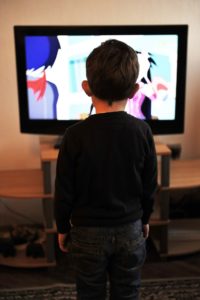The connection between electronics and our child’s brains is real- but that doesn’t mean we have to unplug forever. That’s the message Dr. Christy Kane, Ph.D. CMHC, wants parents to understand about her research.
“Electronics aren’t going away. So, we need to help educate children on exactly how electronics play on their brain,” Kane said. “Parents need to look at electronics as an effective tool as long as other aspects are in place.” One of those aspects Kane recommends is an electronic media plan. She offers plans based on age, maturity level and what parents feel is best for their own family. She said having a plan in place helps parents enforce the rules and educate their kids on the reasons behind the boundaries.
Lehi resident, Damon Covey, is a father of two teenagers and he said it has been a process in his family to find that balance between electronics and the real world. “We kind of bucked the system at first and just refused to give our kids any phone at all. Then we moved to flip phones, but that presented its own set of challenges.” Covey said. The family eventually did get smartphones with all the parental locks and limiting access. He said educating his kids on the “why” of the rules, is the most important element. “It’s important for them to understand why limits are needed and why things may be bad–not just because a parent says they’re bad. At the end of the day, that’s really all you can do.” Covey said from his experience, kids will get access through their friends or from school, so completely unplugging just didn’t make sense.
The American Journal of Pediatrics released a study saying less than five percent of kids are getting enough physical exercise, and it’s mostly due to electronics. Kane said kids’ play is now more sedentary. She said the answer isn’t to just ban electronics from the home- but to be aware of how the use of electronics is impacting our kids. “There is really clear research showing it’s far more beneficial to be engaged in the real world over the virtual world,” Kane said. Kane suggests children under five especially should have very limited exposure to the virtual world and focus on hands-on, tactile activities.
 Kane mentioned that qualitative data shows kids who take a couple of days off social media report feeling so much better. Kane said it’s because our bodies are designed to be reactive. “We’re meant to be social. It feeds into our brain stem and into our body. Our whole central nervous system is connected. The more you engage all parts of your body in the learning process, the more retention you gain of that information.”
Kane mentioned that qualitative data shows kids who take a couple of days off social media report feeling so much better. Kane said it’s because our bodies are designed to be reactive. “We’re meant to be social. It feeds into our brain stem and into our body. Our whole central nervous system is connected. The more you engage all parts of your body in the learning process, the more retention you gain of that information.”
One example of better media use is the connection of using electronics together. Kane gave the example of a family watching a YouTube video together and then discussing the content, rather than letting kids watch it isolated. “Families who do positive social media challenges together is more beneficial than their kids spending hours and hours comparing themselves to other posts,” she said. Covey mentioned his family has an activity they call “Getting lost on YouTube” where they sit down as a family and watch funny videos for 30-60 minutes and laugh together. Covey said he feels it also helps “take the mystery away.”
The main reason behind making electronics more of a group activity is the dopamine and oxytocin connection. Kane explained, “Electronics by themselves give the child’s brain dopamine. That brain also needs oxytocin- which is received through interaction and physical touch. It’s about balance.” Kane said if people are not interacting face-to-face, they aren’t socializing according to the brain. Which is why using only social media can seem so isolating. The brain needs physical touch and human interaction to balance out the dopamine given with the use of electronics. “Still use electronics,” Kane said. “But use them in a way that can increase human connection.”
Kane recommends a few books parents can read to understand more about the effect of electronics on children; “Glow Kids”, “iGen”, “Into the Magic Shop.” Her website TotumLink.com also offers various resources and blog posts for parents.